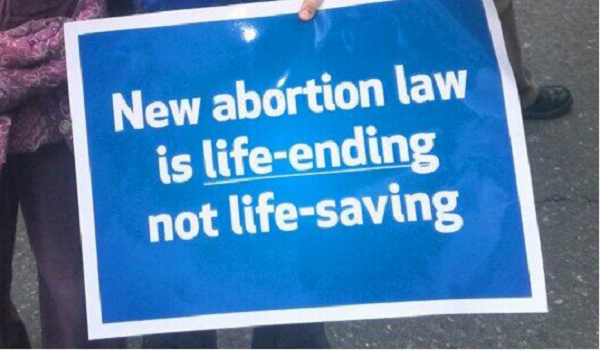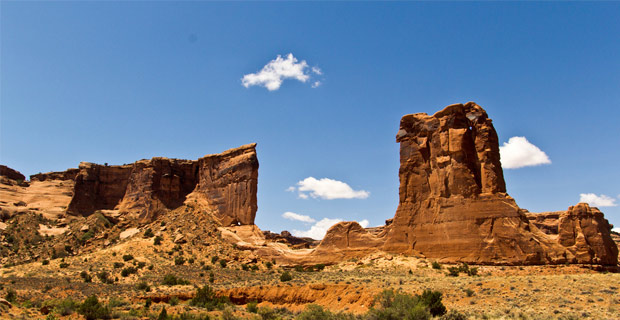By Debbie Coffey
Investigative Journalist/PPJ
Copyright 2011 All Rights Reserved
“It’s ironic that this mining deal involves the words hope and liberty, because what this really represents is that we are losing both for our country. You can see it on the faces of the farmers and ranchers at this meeting.”
Part 1 – December 7, 2010
![usa-dees]() It seems like there’s not much hope for Mt. Hope in Nevada. A brave group of American farmers and ranchers (and so far, Eureka County, NV) are all that is standing between our valuable American resources and water rights, and a Chinese company that has taken a $745 million loan from a bank fully owned by the Chinese Government.
It seems like there’s not much hope for Mt. Hope in Nevada. A brave group of American farmers and ranchers (and so far, Eureka County, NV) are all that is standing between our valuable American resources and water rights, and a Chinese company that has taken a $745 million loan from a bank fully owned by the Chinese Government.
Mt. Hope is about 23 miles northwest of Eureka, NV, and contains the world’s largest and highest grade undeveloped molybdenum project, the Mt. Hope Project.
What is molybdenum? It has the 6th highest melting point of any element, and is used in nuclear reactors, high temperature superalloys, aircraft parts, electrical components, high strength steel alloys, high pressure and high temperature applications, medical applications, gas and oil pipelines to prevent leaks, and as a catalyst in oil refining. It is also a catalyst in liquefaction (helping refiners meet EPA and EEU pollution emission standards) and co-processing, the process of liquefaction of tires and plastics. Demand is increasing in the green industry since it’s used in the production of pipes and tanks that transport biofuels, which are corrosive. Molybdenum is also used in thin film CIGS solar panels, which are less expensive than traditional solar cells.
General Moly is 25% owned by Hanlong USA Mining, a subsidiary of Sichuan Hanlong Group, a Chinese “private enterprise.” Sichuan Hanlong Group recently received a $1.5 billion loan from the Export-Import Bank of China (China Eximbank) to support its investments in overseas mining opportunities, with $745 million towards General Moly. The Export-Import Bank of China is fully owned by the Chinese government and under the leadership of the State Council. It’s a “government policy bank.” Hanlong mining’s website states “China is on a long term growth path to becoming the world’s largest economy” and that Hanlong is “undergoing a period of rapid international expansion.”
China is securing molybdenum resources. China has been the world’s largest producer of molybdenum, supplying almost a third of global supplies. Increasing global demand may prompt China to restrict exports. This may cause the price of molybdenum to rise significantly. In October, 2010, China’s Ministry of Land and natural Resources declared molybdenum a strategic metal.
Our National Academy of Science defines strategic metals as those that are important in use and subject to potential supply restrictions. Strategic metals are critical to our national security. If a foreign company owns OUR supply of a strategic metal, could this company potentially restrict our use of the metal and sell it elsewhere in the world? If Hanlong ever went “belly up,” would the Chinese government bank take over General Moly? If molybdenum is strategic for China, shouldn’t it also be strategic for the U.S.A.? Why are we letting a foreign country have any control of this resource?
General Moly (Idaho General Mines, Inc. in 2004) owns 80% of Mt. Hope Project, and the other 20% is owned by POSCO (Pohang Iron and Steel Company) of Pohang, South Korea. Mt. Hope has about 1.3 BILLION pounds of molybdenum.
General Moly also owns 100 % the Mt. Liberty Project on a royalty free basis. Mt. Liberty is a molybdenum mine 25 miles northwest of Tonopah, Nevada and contains 503 million pounds of molybdenum. General Moly claims these are the two best molybdenum projects in the world, and once production commences, General Moly is expected to become the world’s largest primary molybdenum producer.
It’s ironic that this mining deal involves the words hope and liberty, because what this really represents is that we are losing both for our country. You can see it on the faces of the farmers and ranchers at this meeting.
The only reason I heard about Mt. Hope was because I went to Tonopah, NV to observe the BLM rounding up our wild horses. The Paymaster Herd Management Area (HMA) is about 100,500 acres and the BLM removed 45 “excess” horses, leaving only 23 wild horses on 100,500 acres. The Montezuma HMA is 77,931 acres, and the BLM removed 78 wild horses and 61 burros, leaving only 3 wild horses and 10 burros on 77,931 acres. The BLM claims they rounded up “excess” horses to protect the range from degradation and to strive for a “thriving natural ecological balance.” I’d like them to explain how one horse per every 1,000 or 1,500 acres could possibly degrade the range. A horse only drinks about 15 gallons of water per day.
This is almost ludicrous in comparison to this: the Mt. Hope Project will need 7,000 gallons of water per minute (gpm) for the life of the mine (40-50 years) and will draw 11,300 acre feet annually (afa) from the aquifer. The project layout shows that one waste dump will hold 650 million tons, the tailings facility will hold 435 million tons, another waste dump will hold 125 million tons, and the Ultimate Pit, the open pit, will have 669 million tons of “resource” dug out of it, and will take 1,220 years to reach equilibrium. (In 44-50 years when General Moly finishes mining, and this pit fills with water, for every gallon that evaporates out of it, a gallon of water will be drawn from the aquifer beneath it.)
Considering the issues above, the BLM seems to be in violation of the Federal Land Policy & Management Act of 1976 (FLPMA), which mandates them to manage public lands and various resource values so that they are utilized in the combination that will best meet the present and future needs of the American people…not necessarily to uses that give the greatest economic return.
A General Moly presentation claims the BLM has agreed not to protest General Moly’s water rights, and that the Battle Mountain BLM is “eager” to finish the EIS process and that “the Battle Mountain BLM office has full authority on Record of Decision (ROD).
Although the farmers and ranchers have asked to see a water drawdown map of 5 feet, the BLM has only required General Moly to provide a water drawdown map of 10 feet. The BLM has also not required General Moly to provide a water drawdown map of 20, 30 or 40 feet.
The Mount Hope Project and Liberty Project aren’t mentioned on any of the BLM Field Office websites.
As a matter of fact, it seems pretty hush hush. I tried to get a copy of the minutes of the Sept. 30, 2010 Northeastern Great Basin Resource Advisory Council (RAC) meeting (they advise the BLM), which had plans about mineral projects on the agenda. However, the Associate District Manager of the Elko Field Office told me the minute taker was “swamped” and they did not have a target date to get them completed. This meeting was over 2 months ago…so nobody else in that office can type?
I also asked the BLM if the public could attend the really important meeting that BLM is having with General Moly and other government agencies the week of Dec. 13, 2010 to discuss the Draft Environmental Impact Statement (DEIS), but was told by the Battle Mountain Field Office that it was an “internal meeting.” Our tax dollars are paying for the BLM building and government employee salaries, but we aren’t allowed to attend this meeting? By the time the public is allowed to attend public meetings and has the “opportunity to provide feedback” this will pretty much be a done deal.
I happened to notice there was a meeting at the Nevada Division of Water Resources in Carson City, Nevada, regarding 88 water rights applications by General Moly subsidiary Kobeh Valley Ranch LLC. (General Moly also wants to buy up the water rights of nearby farmers and ranchers.) This decision rests on the shoulders of one man, Jason King, Nevada’s State Engineer.
In today’s meeting, Dwight Smith, owner of Interflow Hydrology, Inc. while testifying on behalf of his client, General Moly, referred to the BLM as a “stakeholder.” What is BLM’s stake?
This small group of our farmers and ranchers didn’t sell out for money offered. They’re standing strong. They use words like “community” and “our future” when talking about this issue. If you’d like to support them:
Attend a meeting on Dec. 9 and 10, 2010 (9 a.m. – 4 p.m.) at Nevada Dept. of Water Resources, 901 S. Stewart Street, room #2002, Carson City, NV 89701
Or call BLM Battle Mountain District Office: Gerald Miller, District Manager (775) 635-4000
BLM Nevada: Ron Wenker, State Director (775) 861-6590
SOURCES:
www.generalmoly.com
www.hanlongmining.com
http://www.cnbc.com/id/40252546/
www.criticalstrategicmetals.com
www.strategicmetal.com
www.metal-pages.com
www.chinamining.org
http://english.eximbank.gov.cn/profile/intro.shtml
http://www.blm.gov/nv/st/en/res/resource_advisory.html
www.blm.gov
www.thefederalregister.com
www.wealthdaily.com
http://www.e-mj.com/index.php/news/us-a-canada/297-general-moly-gets-major-investment-for-mt-hope.html
http://www.gold-eagle.com/editorials_05/reser092205.html
Source – http://ppjg.me/2010/12/07/chinese-government-money-is-buying-one-of-u-s-a-%E2%80%99s-biggest-mines/
~~~~~~
Part II – January 1, 2011
![29881_1thm]() Nevada is one of the most seismically active states in the U.S.A., ranking third after California and Alaska. Nevada’s many faults are found at the base of almost every mountain range.
Nevada is one of the most seismically active states in the U.S.A., ranking third after California and Alaska. Nevada’s many faults are found at the base of almost every mountain range.
A proposed molybdenum mine at Mt. Hope, near Eureka, Nevada, (owned by General Moly) seems to be located near the Diamond Valley Fault zone, the Western Diamond Mountains Fault zone and the Diamond Mountains Fault zone.
On Feb. 21, 2008, a magnitude 6.0 earthquake shook Wells, Nevada and caused extensive building damage. This earthquake occurred on a previously unmapped fault.
The U.S. National Park Service states “While earthquakes don’t occur at any regular interval, historically the frequency of an earthquake of magnitude 6 or higher has been one every 10 years, and for magnitude 7 or higher, one every 27 years.”
Even the drilling from geothermal projects causes little earthquakes. A magnitude 4.5 was reported at The Geysers in Lake and Sonoma counties in California.
Could an earthquake cause Mt. Hope’s tailings pipeline to rupture, or damage buildings, equipment or the lining of the pit tailing pond?
Eureka Moly (a consolidated subsidiary of General Moly) sent brochures to Eureka residents declaring “A Eureka Moment! Eureka Moly will protect water resources in the region”
How can Eureka Moly promise this?
Even without an earthquake, there are potential problems. In an article titled “False Promises: Water Quality Predictions Gone Wrong: Large Mines and Water Pollution” (Earthworks/MPC 2004) it states that “Water quality impacts from hard rock mines are very difficult to predict. Despite modern technology, government and industry predictions are often wrong, and the long term environmental and fiscal implications are often severe.”
The article gives ten examples, including Rain Gold Mine, near Elko, Nevada, “which has had a serious acid mine drainage problem since 1990, when surface water drainage from the mine’s waste piles began generating acid, contaminating two miles of nearby Dixie Creek. The drainage also contained elevated levels of mercury and arsenic.” Newmont mining, the mine’s owner, supposedly didn’t anticipate an acid mine drainage problem.
Another example is the Thompson Creek Molybdenum Mine in Idaho’s Salmon River Mountains. There were concerns because processed mine waste in the tailings contained pyrite, and earthquakes, landslides, erosion or water system failures could expose pyrite to air and water, causing Acid Mine Drainage (AMD) to form, sending acid and dissolved metals towards the Salmon River. The Forest Service knew there was AMD in 1988, and recommended that the mine needed to address AMD problems in 1989. The revised operating plan to address AMD wasn’t released until 1998. Nine years later.
Earthworks, a non-profit organization protecting communities and the environment from “the destructive impacts of mineral development,” describes acid mine drainage: “At metal mines, the target ore is often rich in sulfide minerals. When the mining process exposes the sulfides to water and air, together they form sulfuric acid. This acid can and does dissolve other harmful metals and metalloids (like arsenic) in the surrounding rock. Acid mine drainage can be released anywhere on the mine where sulfides are exposed to air and water, including waste rock piles, tailings, open pits, underground tunnels and leach pads.”
Also, acid mine drainage “can occur indefinitely – long after mining has ended. Many hardrock mines across the western United States may require water treatment in perpetuity.”
There was inadequate bonding at the Thompson Creek Mine. The mine’s bond was only $19 million, which was low considering the mine’s size and what would be required for reclamation. The bonding didn’t include the cost to construct a water treatment plant(s), or the high cost of water treatment. The bond also didn’t include the cost of rock and soil needed for capping the tailings facility and waste rock dumps. (This alone was estimated at $108 million.)
In General Moly’s 2009 10k form, it states that “Mining is inherently dangerous and subject to conditions or events beyond our control, and any operating hazards could have a material adverse effect on our business” and “Mining at the Mt. Hope Project will involve various types of risks and hazards, including environmental hazards, industrial accidents, metallurgical and other processing problems, unusual or unexpected rock formations, structure cave-in or slides, flooding, fires and interruption due to inclement or hazardous weather conditions.”
Then, more importantly, it is stated that “We may not be able to obtain insurance to cover these risks at economically feasible premiums and some types of insurance may be unavailable or too expensive to maintain.”
If they balk at the insurance being too expensive, what will they do about paying to fix any problems? They also state they could “suffer a material adverse effect on our business and the value of our securities may decline if we incur losses related to any significant events that are not covered by our insurance policies.”
This isn’t the only thing General Moly seems to balk at. General Moly hasn’t even granted the simple requests of local farmers and ranchers for 1 foot and 5 foot water drawdown maps. This wouldn’t cost much or take long. General Moly representatives claim that the Bureau of Land Management instructed them to ONLY do a 10 foot water drawdown map. Why would the BLM do that if they’re acting in the best interests of the American people? It seems that the BLM and General Moly are not doing 1 foot or 5 foot water drawdown maps because these maps will show a greater area of impact. These maps are important because even a 1 foot water drawdown could dry up streams.
General Moly’s 2009 10k form also states that surface rights on the Mt. Hope mining project “include BLM open range grazing rights and stock water rights.” This is OUR land and OUR water. What about other mines near other earth quake fault lines in other states? The Nevada Bureau of Land Management and General Moly seem to be gambling with our future.
SOURCES:
http://ppjg.wordpress.com/2010/12/07/chinese-government-money-is-buying-one-of-u-s-a-%e2%80%99s-biggest-mines/
http://www.nps.gov/grba/naturescience/faults.html
http://earthobservatory.nasa.gov/IOTD/view.php?id=8494
“False Promises: Water Quality Predictions Gone Wrong – Large Mines and Water Pollution” http://www.bristolbayalliance.com/mines_and_water.html
http://www.earthworksaction.org/amd.cfm
http://earthquake.usgs.gov/earthquakes/recenteqscanv/FaultMaps/116-40.html
http://www.wildwhiteclouds.org/news_mining_ThompsonCreek.html
http://www.pressdemocrat.com/apps/pbcs.dll/article?AID=/20090627/ARTICLES/906279915/1350
http://www.lasvegassun.com/news/2010/aug/14/nevada-gaining-in-development-of-geothermal-energy
www.generalmoly.com
Source: http://ppjg.me/2011/01/01/general-moly%E2%80%99s-mt-hope-mine-let%E2%80%99s-hope-the-%E2%80%9Ceureka-moment%E2%80%9D-doesn%E2%80%99t-spell-disaster/
~~~~~~~~~~~~~~~~~~
PART III – 2011
Mining companies are buying up ranches left and right, just to get the water rights. Then all they have to do is get a permit to change the use from irrigation to mining. Once appropriated, the water rights are not available for any other development, even if the mine never opens, unless the mine is willing to sell the water rights.
At a Nevada Division of Water Resources hearing in December, 2010, an admirable group of Nevada farmers and ranchers, who’ve had water rights in their families for generations, protested the appropriation of water rights of Kobeh Valley Ranch, owned by mining company General Moly. General Moly wants to change the use of water rights on Kobeh Valley Ranch from irrigation to mining for their Mt. Hope mine. This is in addition to other water rights General Moly has already purchased from other farms surrounding the valley.
To give you some background, General Moly is 25% owned by Hanlong USA Mining, a subsidiary of Sichuan Hanlong Group, a Chinese “private enterprise.” Sichuan Hanlong Group recently received a $1.5 billion loan from the Export-Import Bank of China (China Eximbank) to support its investments in overseas mining opportunities, with $745 million towards General Moly. The Export-Import Bank of China is fully owned by the Chinese government and under the leadership of the State Council. It’s a “government policy bank.”
Black Rock Trust Company, which is associated with billionaire George Soros, seems to be the 2nd top owner of shares in General Moly.
BlackRock Trust is also the 5th top owner of shares in agricultural company Monsanto.
Interestingly, Black Rock Trust’s parent company, Black Rock, Inc., is the world’s biggest money manager (and a fund related to George Soros) and has acquired stakes in the Far East Energy Corp., a Houston company that’s raising cash to develop natural-gas properties in China.
Mt. Hope is about 23 miles northwest of Eureka, NV, and contains the world’s largest and highest grade undeveloped molybdenum project, the Mt. Hope Project. The Mt. Hope plan of operations is on 260 acres of private land, and 8,000 acres of public land.
The farmers and ranchers (irrigators) are worried because KobehValley water is believed to flow into Diamond Valley, where many of them need water for farms and ranches. Some worry that if the mine’s tailings ponds were ever breached, it could pollute surrounding hydrographic basins. Mt. Hope straddles 3 hydrographic basins (KobehValley, Diamond Valley and PineValley).
B.G. Tackett, who has been a field engineer with California’s Dept. of Conservation, was concerned because the entire flow system was not studied. Antelope Valley was not included. No applications to drill wells are needed in non designated basins. Antelope Valley and South Monitor and North Monitor are not designated. Will water ever be taken from these valleys?
Farmers and ranchers have a big concern with head charge – whether water in Kobeh Valley is “confined” (by geological bodies that are less permeable than the aquifer), or if Kobeh Valley water flows to Diamond Valley and other valleys.
General Moly created hypothetical models that claim that Kobeh Valley water is confined and doesn’t flow to other valleys, and that the mine’s use of 7,500 gallons per minute of water for the next 40-50 years (the life of the Mt. Hope mine), will not effect Diamond Valley and other valleys.
However, according to the U.S. Geological Survey, many aquifers are intermediate between being completely unconfined or confined.
The farmers and ranchers know they won’t be able to truly tell, until the passage of time, if there IS interconnectivity between the valleys. If there is interconnectivity, it will be too late to stop what could be disastrous effects on their farms and ranches.
Also, when mining stops in 44-50 years, the development of a cone of depression from the open pit that had 669 million tons of “resource” dug out of it, can result in an overall decline in water levels over a large geographic area, change the direction of ground-water flow within an aquifer, reduce the amount of base flow to streams, and capture water from streams or from adjacent aquifers. As it is, they know it will take 1,220 years for the pit lake to reach equilibrium.
Do these farmers and ranchers have reasons to worry?
Look at a few things that have happened:
The “Sustainability Trust”
In August, 2010, General Moly announced that their subsidiary, Eureka Moly, would fund a “Sustainability Trust” for $8-$12 million, in exchange for the cooperation of the Eureka Producers Cooperative (EPC) not opposing Eureka Moly’s water rights and the permitting of the Mt. Hope Project.
Co-op members were kept in the dark about meetings between Eureka Moly (EMLLC) and two individuals from the co-op (Jim Gallagher and Andrew Marshall) being conducted in secret (excluding the rest of the co-op members as well as the rest of the Eureka farming community). It seems that Gallagher and Marshall signed a Confidentiality Agreement and they also seem to be included with EPC on the “Agreement,” which stipulates that EPC:
“not oppose, directly or indirectly, any of EMLLC’s mining and milling plans or operations, as set forth in its Plan of Operations filed with the Bureau of Land Management or water applications for EMLLC’s present water usage requirements and agrees not to participate in any way or manner, directly or indirectly, in any protests, petitions, or activities of others which are designed or intended to delay, adversely effect, or interfere with EMLLC’s mining and milling plans or operations as set forth in the Plan of Operation, including EMLLC’s efforts to obtain any regulatory approvals or permits for the Mount Hope Project from federal, state or local authorities.”
And also: “It is acknowledged that Jim Gallagher and Andrew Marshall , members of EPC also serve on the Eureka County appointed NEPA Committee (the “Committee”). Those EPC members may continue to serve on the Committee and fulfill their duties and responsibilities to the Committee in a neutral and impartial manner without said service violating the terms and provisions of this Agreement.”
BOTH Gallagher and Marshall are ON THE NEPA (National Environmental Policy Act) COMMITTEE reviewing General Moly’s plan of operations with the Bureau of Land Management (BLM). Does this sound like a huge conflict of interest to you?
NEPA responsibilities are those of a trustee of the environment for current and succeeding generations, to assure for all Americans safe, healthful, productive, and esthetically and culturally pleasing surroundings, and to attain the widest range of beneficial uses of the environment without degradation, risk to health or safety, or other undesirable and unintended consequences.
How can Gallagher and Marshall possibly fulfill their duties and responsibilities on the NEPA committee if they’ve agreed to be “neutral and impartial” in the meetings? They’re in meetings with the BLM for the environmental assessment of Mt.Hope. Are they just sitting in chairs like lumps on a log?
The rest of the EPC members were only given part of one afternoon meeting to consider the complicated Agreement, which was developed in secret. They realized they were not going to be able to access the proceedings or be informed of the decisions until AFTER the contract was executed and filed with the SEC. They weren’t sure if they had the most current copy of the Mt. Hope Plan of Operations, or if, from vague wording in the Agreement, they’d be sued in ten years if they exercised their 1st Amendment rights and commented on the operations of the mine. It seems that many EPC members found these restrictions to be unacceptable.
With the influx of that Chinese government money, General Moly got themselves a big lobbyist: Pete Ernaut
Pete Ernaut was a former three-term Republican state assemblyman. He ran political campaigns for Sen. John Ensign and Nevada Governor Brian Sandoval. Ernaut is a close advisor to Gov. Sandoval, who recently met with Secretary of the Interior Ken Salazar. And guess what? Gov. Sandoval asked that permitting times be reduced for Mt. Hope (along with some other mines).
The BLM has told General Moly to ONLY do a 10 foot water drawdown map
Why? This masks the impact of the water used by the mine. The farmers and ranchers have repeatedly asked for 1’ and 5’ water drawdown maps. A stream can dry up with even a 1’ water drawdown. The area of impact will show a much greater area on a 5’ water drawdown map than on a 10’ water drawdown map.
So, if the BLM is acting impartially, as they are supposed to do according to their own ethics rules, why are they directing that only a 10’ water drawdown map be done? How could this possibly benefit the farmers and ranchers? It wouldn’t cost General Moly much or take very long to do the 1’ and 5’ water drawdown maps. If General Moly is as ethical as they claim to be, why don’t they just ask Pete Ernaut to lobby the BLM or Secretary of the Interior Ken Salazar to let them do it?
The farmers and ranchers are very concerned because they still haven’t been able to see a mitigation plan, and they depend on water from the aquifer for their livelihood and for the future of their community.
The mitigation plan and monitoring plans may be part of the final Plan of Operations, and this is not available to the public until it’s released in the Draft Environmental Impact Statement (DEIS). There is supposed to be a 45 day period for the public to comment before the BLM Battle Mountain District Office manager issues a Record of Decision (ROD). Then it’s a done deal. Do you think the DEIS process should be open to the public, since it concerns our public lands and private lands, and involves our tax dollars?
These farmers and ranchers have been growing this community for generations. Please support them.
Send an e-mail to BLM Director Bob Abbey at RVAbbey@blm.gov (with a copy to dfurtado@blm.gov, Doug Furtado, Battle Mountain District Manager) and ask that the BLM Battle Mountain District Office have 5’ and 1’ drawdown maps done on General Moly’s Mt. Hope Project in Nevada for the DEIS.
Or, attend a meeting on May 10, 2011, 9 a.m., at Nevada Dept. of Water Resources, (second floor, Tahoe Hearing Room), 901 S. Stewart Street, Carson City, NV89701. Check here http://water.nv.gov/hearings/ to make sure the date and time hasn’t changed.
Sources:
http://elkodaily.com/mining/article_9a4ba564-4502-11e0-a5f6-001cc4c002e0.html
http://elkodaily.com/mining/article_9c34c2f0-ac02-11df-adc1-001cc4c002e0.html
www.generalmoly.com
http://www.sec.gov/Archives/edgar/data/1275229/000110465910045992/a10-16212_2ex10d1.htm
http://rrpartnersfoundation.org/board-ernaut.html
http://www.leg.state.nv.us/AppCF/Lobbyist/reports/ListLobbyists.cfm?Paid=1
http://pubs.usgs.gov/circ/circ1217/html/boxa.html
http://www.elr.info/Fedlaws/statutes/Nepa.pdf
http://www.monsanto.com/investors/Pages/ownership-profile.aspx
http://www.dailyfinance.com/company/general-moly-inc-common-stock/gmo/ase/institutional-ownership
http://www.bloomberg.com/news/2010-09-09/blackrock-soros-fund-buy-stakes-in-far-east-energy-seeking-gas-in-china.html
http://www.nytimes.com/2008/01/15/business/worldbusiness/15iht-soros.4.9237343.html
http://phx.corporate-ir.net/phoenix.zhtml?c=119943&p=irol-SECText&TEXT=aHR0cDovL2lyLmludC53ZXN0bGF3YnVzaW5lc3MuY29tL2RvY3VtZW50L3YxLzAwMDEwODYzNjQtMTEtMDA0NjMzL3htbA%3d%3d
Nevada Division of Water Resources hearings
![ppjg-48]() (C) 2011 Debbie Coffey
(C) 2011 Debbie Coffey
Source: PPJ Gazette
.
General Moly Announces Water Rights Approval for Mt. Hope Project
LAKEWOOD, COLORADO – July 15, 2011, General Moly, Inc. (the “Company”) (NYSE Amex and TSX: GMO) announced that the Company, through a subsidiary, received approval of its water applications for the Mt. Hope mine.
On July 15, 2011, the Nevada State Engineer issued ruling 6127 granting the Company’s water right applications for the use of 11,300 acre-feet annually (afa) of water for mining purposes, which will facilitate the pumping of approximately 7,000 gallons per minute. The specific water right permits are anticipated to be issued following payment of statutory fees, and, following the State Engineer’s approval of a Monitoring, Management, and Mitigation Plan (3M Plan), prepared in cooperation with Eureka County, the water will be available for consumptive use.
Bruce D. Hansen, Chief Executive Officer, said, “We are extremely pleased that once again the State Engineer has granted our water applications, representing a major milestone for the development of the Mt. Hope mine. Separate from the legal and administrative process, we are also continuing discussions with area stakeholders who may have legitimate concerns to hopefully mitigate their issues. We have been working closely with Eureka County to develop a 3M Plan, which will be submitted to the State Engineer’s office prior to water use, which will provide additional protection for other water consumers in the Kobeh and Diamond valleys through an open and transparent process. We maintain our commitment to the Eureka Producers’ Cooperative through the establishment of the Sustainability Trust to help Diamond Valley conserve water and enhance the viability of the agricultural community.”
WATER RIGHTS HISTORY
The Mt. Hope mine will require a net of approximately 7,000 gallons per minute of makeup water to facilitate ore processing, dust control, and other uses.
In 2006 and 2007, the Company, through a wholly-owned subsidiary, acquired more than 15,630 afa of groundwater rights, primarily in the Kobeh Valley groundwater basin, through the purchase of ranches owning senior agricultural water rights. Those water rights require conversion to mining use as well as a change in location from existing well locations and places of use spread throughout Kobeh Valley to a more concentrated well field and place of use located near the Mt. Hope project. These actions require applications to the Nevada State Engineer’s office, which were initially submitted in 2007.
In April 2009, the Nevada State Engineer issued Ruling 5966 granting the Company’s applications for 11,300 afa, satisfying the Mt. Hope project’s makeup water requirement. That ruling was appealed by the County of Eureka and some local growers, including the Eureka Producers’ Cooperative (EPC). In April 2010, a Nevada District Court overturned the State Engineer’s decision on a procedural issue, remanding the decision back to the State Engineer to reconsider in a new hearing.
In December 2010 and May 2011, the State Engineer held public hearings where the Company presented, among other things, its hydrology model to the State Engineer and protestants, allowing for discussion and testimony related to predicted impacts to existing water users.
In the meantime, the Company has continued to work on resolving concerns with the protestants. In August 2010, the Company announced the creation of a Sustainability Trust in cooperation with the EPC, which is tasked with developing and implementing programs that will serve to enhance the sustainability and well-being of the agricultural economy in the Diamond Valley groundwater basin. In conjunction with the creation of the Trust, the EPC withdrew its protests and appeal and has since cooperated with the Company. The $4 million trust will be funded by Eureka Moly LLC, the Company’s 80%-owned subsidiary.
* * * *
General Moly is a U.S.-based molybdenum mineral development, exploration and mining company listed on the NYSE Amex (formerly the American Stock Exchange) and the Toronto Stock Exchange under the symbol GMO. Our primary asset, our interest in the Mt. Hope project located in central Nevada, is considered one of the world’s largest and highest grade molybdenum deposits. Combined with our second molybdenum property, the Liberty project that is also located in central Nevada, our goal is to become the largest primary molybdenum producer by the middle of the decade. For more information on the Company, please visit our website at http://www.generalmoly.com.
http://investor.generalmoly.com/phoenix.zhtml?c=181598&p=irol-newsArticle&ID=1610030&highlight=
Board members of General Moly have connections to “Canadian” Yukon Zinc Corp
Corporate History
Yukon Zinc, formerly Expatriate Resources, sharpened its focus on the emerging Finlayson District in the Yukon by establishing StrataGold Corporation and Pacifica Resources Ltd. The sale of the gold assets to StrataGold in 2003 and public financing of StrataGold created significant value for Expatriate shareholders. In 2004 Pacifica Resources Ltd. (now Selwyn Resources) received Non-Finlayson District exploration properties.
In July 2008, Jinduicheng Molybdenum Group Co. Ltd. and Northwest Nonferrous International Investment Company Ltd. acquired all of the public shares of Yukon Zinc Corporation. Currently Yukon Zinc is private and no longer publically listed, and JDC is the majority shareholder. In 2011, Yukon Zinc secured four key shareholders including Fosun Gold Holdings Limited, Arich Investments Ltd., Silvercorp Metals Inc., and Northern Mineral Investment Corporation. In June 2012, the shareholders named Yukon Zinc’s parent company, Jinduicheng Canada Resources Corporation Limited….http://www.yukonzinc.com/en/company_management_index.cfm
What happened to Yukon Zinc (Canada) being bought out by the Chinese will probably happen to both of these huge mines in Nevada. The Chinese Government are buying public land esssentially for water rights, then comes the buyouts by the Chinese which then becomes privately owned. Thousands, if not millions of acres are going this way – bottomline it’s all about life sustaining Water. Will we eventually depend on the Chinese for our own water one might wonder.
.
Note: these Chinese mines are supposedly to employ Americans – check out Yukon where the whole board and management are Chinese. I haven’t checked but wouldn’t be surprised if they brought their own workers as well – all on h-1 visas approved by the government. Never mind that Nevada is facing a huge water crisis. Water from the aquifer bordering California is being drained and piped out to Southern California. Lake Meade is down 132 feet and it isn’t being replenished. Las Vegas is estimated to be out of water by 2012. 7,000 gallons per minute (gpm) for the life of the mine (40-50 years) and will draw 11,300 acre feet annually (afa) from the aquifer. I wonder how many taps will shut down behind that one?
And how hypocritical when the BLM authorizes tremendous water wasting and toxifying mines but objects to a relatively few wild horses on the public lands, claiming there is not enough water for them, these healers of the ecosystem!
![]()
![]()



















































ELKO — In light of ongoing land conflicts, county commissioners want newly confirmed Bureau of Land Management Director Neil Kornze, who grew up in Elko, back for a visit.
But members of the board seemed to disagree Wednesday with the tone the county should take in its invitation.
Commissioner Grant Gerber wrote a draft resolution that listed a number of contentious problems on public land and placed fault at the BLM. At the conclusion of the document, it invited and pleaded for Kornze’s participation at a future commission meeting.
Although commissioners agreed on the issues, three of them thought the resolution was a losing tactic.
“My contention is you don’t invite a guy to have dinner at your house right after you’ve poked him in the eye,” Commission Chairman Charlie Myers said. “I think that’s possibly where we’re going with that resolution.”
Commissioner Glen Guttry said if the invitation wasn’t inviting, the director would choose to stay away.
“I agree with everything that’s in the resolution,” he said. “It’s just that the way it’s worded might be a little bit strong. I don’t want (Kornze) to get a letter that’s to the point where he says, ‘Boy, I don’t know if I want to go to a gunfight with Elko County.’”
Instead of a resolution, the commissioners thought a concise letter would be more appropriate.
Commissioner Jeff Williams said he wanted to sign off on a copy of the letter before it was sent.
The concerned commissioners used the same word throughout the discussion: respect.
Commissioner Demar Dahl was discernibly annoyed at the insinuation the county has been anything other than respectful.
“What’s the deal about being respectful?” he asked. “Aren’t we respectful? We’re always respectful.”
Gerber said the resolution merely stated the county’s concerns regarding restrictions on sage grouse habitat, reduction of grazing on public lands, wild horse populations and fire management.
Waddie Mitchell, Nevada’s honorary sesquicentennial poet, advised the county not to cower behind political correctness.
Myers assured Mitchell that if Kornze agrees to come before the commission, the director would be asked tough, direct questions.
Gerber, who said four attorneys thought the language of the resolution was fine, said he supported writing a letter as long as it didn’t diminish the importance of the issues to northeastern Nevada.
“If you sugarcoat it, I’m not going to vote for it,” he said.
Former assemblyman John Carpenter said he first suggested inviting Kornze to the county because of his ability to influence change.
“He’s really the only one that can settle some of these issues,” Carpenter said. “And the reality, as I see it, this is his job. He needs to come here and listen to what’s happening here. … This is a serious, serious situation. People are losing their livelihoods.”
The county heard from members of the Tomera and Filippini families, both of whom run cattle ranches in Lander County and were recently asked by the BLM Battle Mountain district office to reduce grazing due to drought. Doug Furtado, manager of the Battle Mountain BLM district, was not informed of the meeting in time to attend, according to county staff. [MC - Furtado has closed cattle grazing to numerous ranches]
Elko District Manager Jill Silvey said her office has been working cooperatively with permittees, who agreed to “voluntary non-use” of grazing permits.
“I’m going to work as hard as I can within the scope of my authority and my ability to make sure that we are grazing and we’re grazing to sustain those families now, but also with a long-term goal in mind,” she said.
http://elkodaily.com/news/county-decides-to-invite-blm-chief-to-commission-meeting/article_262dc70a-d71e-11e3-ae13-0019bb2963f4.html
I’ll be surprised if Harry Reid’s ex-aide and BLM Director Kornze will attend the meeting. He has his lucrative job so what does he care about putting ranchers out of business if the alternative is to enrich the Reid Family who got him the job in the first place.
.
Tomera family
The Tomera family of Lander County is battling with the Bureau of Land Management over the closure of one of their grazing allotments. From left: Paul, Lynn, Dan and Pete Tomera stand in the green grass along Lewis Creek above their ranch.
BATTLE MOUNTAIN — Several Lander County ranching families are scrambling to survive after what they describe as the Battle Mountain Bureau of Land Management’s decision to close the Argenta Allotment, where the families have been grazing cattle for generations.
Battle Mountain BLM District Manager Doug Furtado countered that he has not made a formal decision to close the allotment, he has simply asked the ranchers to rest sensitive areas through the hot summer months to allow the range to recover from three years of extreme drought. He adds the Tomera family already has cattle in one field on the north end of the allotment and other areas will be available this fall.
But the effective closure of the majority of the allotment leaves the ranchers scrambling to find pasture for the critical summer months.
The Argenta Allotment, surrounding Mount Lewis south of Battle Mountain, encompasses 365,000 acres. It is bound roughly by the Austin highway on the west and the Crescent Valley highway on the east. The families of Pete Tomera, Paul Tomera, Dan Tomera, Hank Filippini, Dan Flippini, Billie Filippini, Jim Filippini, John Filippini and Shawn Mariluch hold grazing rights on the allotment.
The closure is the latest example of what the ranchers say is heavy-handed treatment by the BLM.
Furtado takes exception to that characterization.
“I’m trying to help these guys be successful, but these are extreme circumstances,” he said.
Pete Tomera, who holds the majority of the grazing rights on the allotment, said he has always cooperated with the BLM and takes pride in the fact he has never been cited by the federal agency for improper grazing practices. He also said he has cooperated with the BLM’s concern over the drought and voluntarily accepted a cut of 8,000 animal unit months (AUMs) last year and 11,000 AUMs this year. An AUM is the amount of forage consumed by a cow in a month. Over an eight-month grazing period, the 11,000 AUMs would represent a reduction of 1,375 cows.
He added he currently has grazing rights for 24,000 AUMs within the Argenta Allotment, which reflects a 50 percent reduction imposed by the BLM in the 1960s. His acceptance of an 11,000 AUM reduction this year would have been a further 45 percent reduction in the carrying capacity of the range.
Tomera said he could understand the closure if the allotment truly could not support his cows, but that is not the case. The last three months have brought much needed relief from the recent drought and the range is in good condition. He has invited anyone interested in inspecting the range for themselves to come out for a tour of the allotment on May 17.
But Furtado said, “They see green grass out there and all they see is forage for grazing. It is not forage, it is recovery.”
He added that he is charged with monitoring the range and implementing grazing reductions when he finds resource damage. He commended the ranchers for their concessions last year, but said those reductions were not effective in preventing damage. He said his agents have boxes of research documenting extensive degradation of the allotment.
The Tomeras answer that his documentation is purposely manipulated to make the range look worse than it really is. They add that they plan to hire their own expert to counter the BLM’s documentation.
In addition to the voluntary reductions in their AUMs, the Tomera family also agreed to a BLM recommendation that they build a 16-mile fence to separate the BLM controlled land from their private land. They hired a contractor at a cost of more than $80,000 and the fence was completed this spring.
Tomera and his wife, Lynn, then went to the BLM office in March and had a three-hour meeting with a range conservationist to hammer out the final details of their grazing permit for this year on the Argenta Allotment. Tomera reported that even though the plan included the reduction of 11,000 AUMs, his family could live with it, and the range conservationist also seemed happy with the plan. He made the short drive home to his ranch, completed his afternoon chores and walked into his house around 5 p.m. to hear a message from the BLM that it had decided to close the allotment completely.
Tomera said he was dumbfounded.
“I have worked hard my entire life to get along with the BLM and I have never been cited for trespass,” he said. “But then one man with some sort of vendetta comes in and, with a snap of his fingers, he makes a decision that can ruin the lives of my family. It’s terrible.”
Furtado explained that the range conservationists that met with the Tomeras did not have the authority to make an agreement.
“Staff cannot make management decisions. They don’t have the authority. They just make recommendations to management,” he said.
Tomera has been selling cows all year to get down to numbers that would have satisfied his voluntary reduction in AUMs.
“I have been sending out a semi load of cattle every other week,” the rancher said. But he still has 1,800 cows and their calves on his private pastures and they will be out of feed by June 1.
He said the Filippinis have found other pasture, but he can’t.
“What am I supposed to do? Sell all my cows? Then what? Sell the whole ranch?” he asked. “Who would buy a ranch that has been targeted by the BLM like this one has?”
Elko County Commissioner Grant Gerber, an attorney who specializes in such cases, said the Tomera family is caught in a horrible position. They were given no notice of the impending closure and have very little recourse.
Gerber, who has represented the Tomeras in other legal matters, said, “They could file a lawsuit, but what good would that do? There would be no resolution to the lawsuit in time for this grazing season, and little hope for a positive resolution in the future. You would probably win one, or two, or three rounds, but they just keep coming back. You can’t afford to fight the government in court.”
Gerber also said he worries about wildfires and their toll on the allotment’s wildlife.
“With all the rain we’ve had the last three months, those mountains will be a tinderbox if the grass is not grazed off,” he said. “Think of all the sage grouse, deer and other animals that will be killed if that mountain burns.”
http://elkodaily.com/news/new-blm-battle-brewing-over-lander-county-grazing/article_9fea15d6-d4cf-11e3-8650-001a4bcf887a.html
.
BLM Managers like the Battle Mountain BLM District Manager Doug Furtado or Harry Reid’s Neil Kornze are putting excessive financial demands on the ranchers. Despite this financial burden the ranchers are fulfilling the BLM’s demands yet they continue to get harrassed by these unelected bureaucrats.
It’s obviously all about Water Rights whether for gold mines, green energy, gas, oil, or whatever. Water is the crux. And those water rights belong to the ranchers.
(United States Revised Statutes section 2339, 2340: *234) When one has complied with the local laws for the appropriation of water, and has constructed upon vacant public lands of the United States the works for diversion of the water, he thereby acquires a vested and an accrued right within the meaning of said section the rights thus acquired are superior to the rights of a subsequent entryman [**1018] upon said lands.
This means that Bundy had established vested water and land rights that trumped any subsequent federal land and water grabs using statute, code and internal mandates. The only way they can get rid of the ranchers who’ve been there for generations is to make it difficult for them financially or environmentally, for example, using the turtle…
Who are these BLM managers really working for…